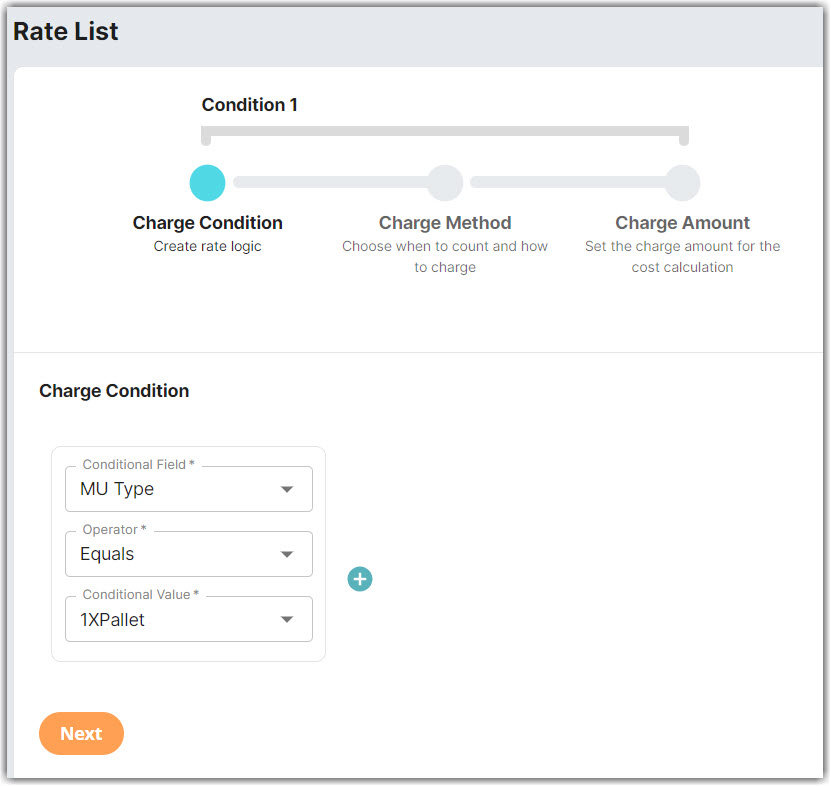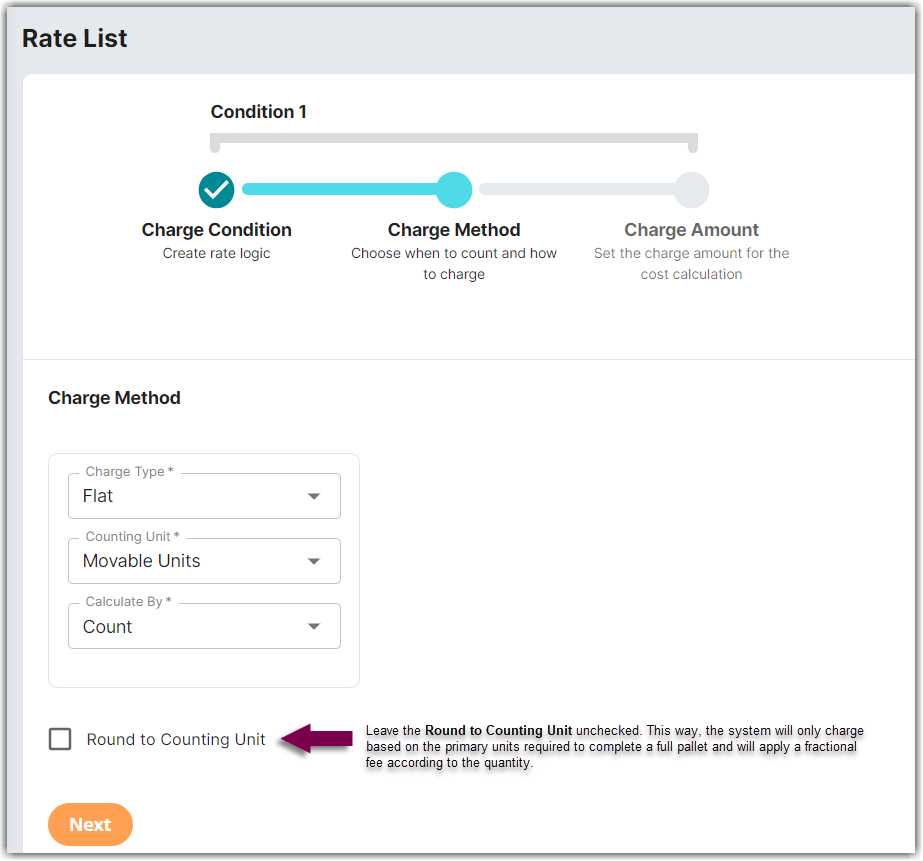Creating a Rate to Charge for a Partial Pallet Based on Movable Unit Types
This article is about the Billing Manager app, not the Billing Wizard in 3PL Warehouse Manager. To learn about the Billing Wizard, please refer to the articles in the Billing Setup.
This article offers a step-by-step guide on creating a rate to capture charges for a specific movable unit type and counting fractions of pallets. You can also watch this instructional video for guidance.
Movable Unit Pre-Condition
Before you proceed with creating the rate, review this help article: Understanding the Use of Movable Units as Counting Units in Rate Creation.
- Navigate to Rates > Rate List.
- Click + Create Rate on the upper right corner.

- Select the following options as shown below on the Create New Rate window. Then, click Continue.
Automated rate > Smart Rate > Flat Rate
- Provide basic details such as Rate Name, Rate Description, and Charge Label.
- Select Receiving for the Transaction Type and Handling for the Charge Category. Then, click Continue.

- Select the following for each field in the Charge Condition section. Then, click Next.
Conditional Field: MU Type
Operator: Equals
Conditional Value: 1XPallet
- Select the following for each field in the Charge Method section. Then, click Next.
Charge Type: Flat
Counting Unit: Movable Units
Calculate By: Count
- On the Charge Amount section, enter the desired charge amount. Then, click Next.
A new window will pop up asking if you would like to add another condition, you can click No if you don't need to add an additional condition. - Click Skip on the Rate-Level Rule section. There is no need to group total charges.
- Click Yes, Save to save this rate.
- Select Yes or No as desired if you want to add to a rate sheet.
